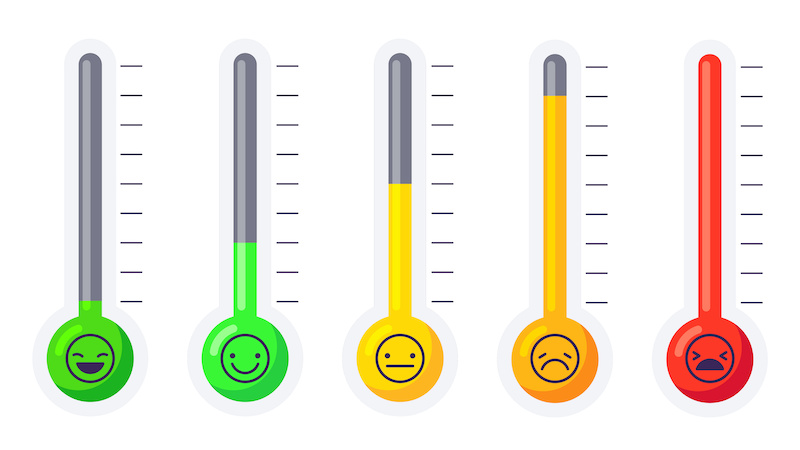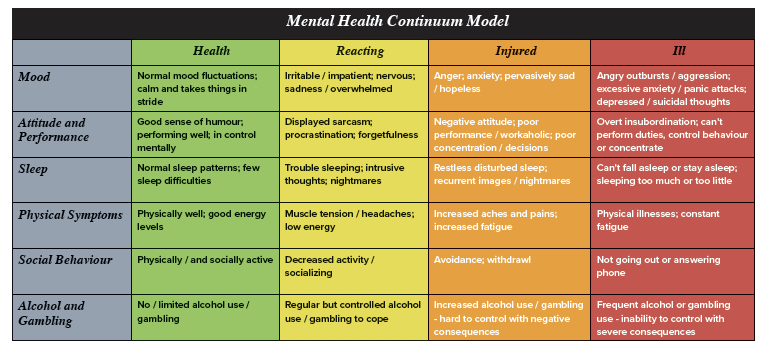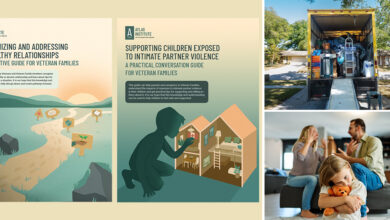Health and Wellness
How to Take Your Mental Temperature
 39. This number has made me panic on several occasions when my children were young. No, not because it was one away from my 40th birthday, but because it is a thermometer reading that caused me concern. I measured my children’s temperatures so often that the ear thermometer I used has an imprint of my hand on it.
39. This number has made me panic on several occasions when my children were young. No, not because it was one away from my 40th birthday, but because it is a thermometer reading that caused me concern. I measured my children’s temperatures so often that the ear thermometer I used has an imprint of my hand on it.
Who hasn’t had their temperature taken? Who doesn’t have a thermometer in their household? (If you don’t, that is okay, of course). A fever is our body’s way of fighting disease; it is also an outward sign that something is going on. As scary as these high numbers may be, it is helpful to at least have an answer – things are getting worse, or things are getting better.

SO, WHERE IS THE DARN THERMOMETER FOR OUR MENTAL HEALTH?
How do we know if there is a problem and if it is getting worse or getting better? There is no real straightforward answer, but we are moving in the right direction. Researchers have created assessment tools like the Beck’s Depression Inventory (BDI) for clinical use in helping with a diagnosis. It is good to know that there are several self-assessment tools available, one is at www.depressionhurts.ca and www.heretohelp.bc.ca that looks at key indicators pointing to a possible mental health problem. Great for self-assessment, perhaps not so great when assessing others.
Let’s look to existing tools and put them to use as an everyday thermometer.
The Department of National Defence adopted a continuum that I use daily for myself and others, you may have seen it: Green-Yellow-Orange-Red scale. It uses colours that I understand: Green, when things are going well, to Red, when professional help is required. The coloured diagram shows more detail.

THE WAY I SEE IT:
Green is like a physical temperature of 36C to 37C – all is going well.
Yellow or 38C is a low-grade fever that may require additional rest, nutrition, support, and monitoring.
Orange is like those middle of the night temperature readings of 39C that medication may help, but if it doesn’t go away, you are going for or calling for some help.
Red is 40C and above, possible panic, you are reaching out for help or going into a clinic or emergency immediately.
The table included is from the Road to Mental Readiness for the CAF (Canadian Armed Forces), which helps to identify which colour our mental health points to. As with the table, the indicators that I track are mood, attitude, sleep, physical symptoms, social behaviour, and alcohol and gambling (or other addictions). These are great indicators of depression and perhaps other common mental health problems like anxiety, trauma, mood, substance disorders, and psychotic disorders.
Clearly, this is not an exact science, but it is at least an opportunity to troubleshoot, and a method to see which way this mental health problem is going for yourself or others. As you are “taking someone’s mental temperature” a couple of things to note.

Things to Note:
1. People who receive help sooner are more likely to return to their “normal”, and services are available – to start, try the Canadian Forces Member Assistance Line (CFMAP). Call 1-800-268-7708 any time—24 hours a day, 365 days a year, for military members, families, veterans, and their families too. Free counselling can be arranged.
2. Most people (me included) don’t want to be told that they are in the orange or red. It is scary and perhaps may come across as annoying or meddling. This is a natural reaction – check out the video “It’s not about the nail” on Youtube (last visited Jan. 23, 2018).
It will hopefully give you a chuckle and knowing smile that even though you see the problem, the nail, the fever, it is hard to give that information to others. With empathy, respect, and consistency you will hopefully be able to tell your friend, co-worker or loved one, what temperature reading you received. Using words like “that sounds hard” to empathize and engage is simple and effective. I know, I use them every single day.









